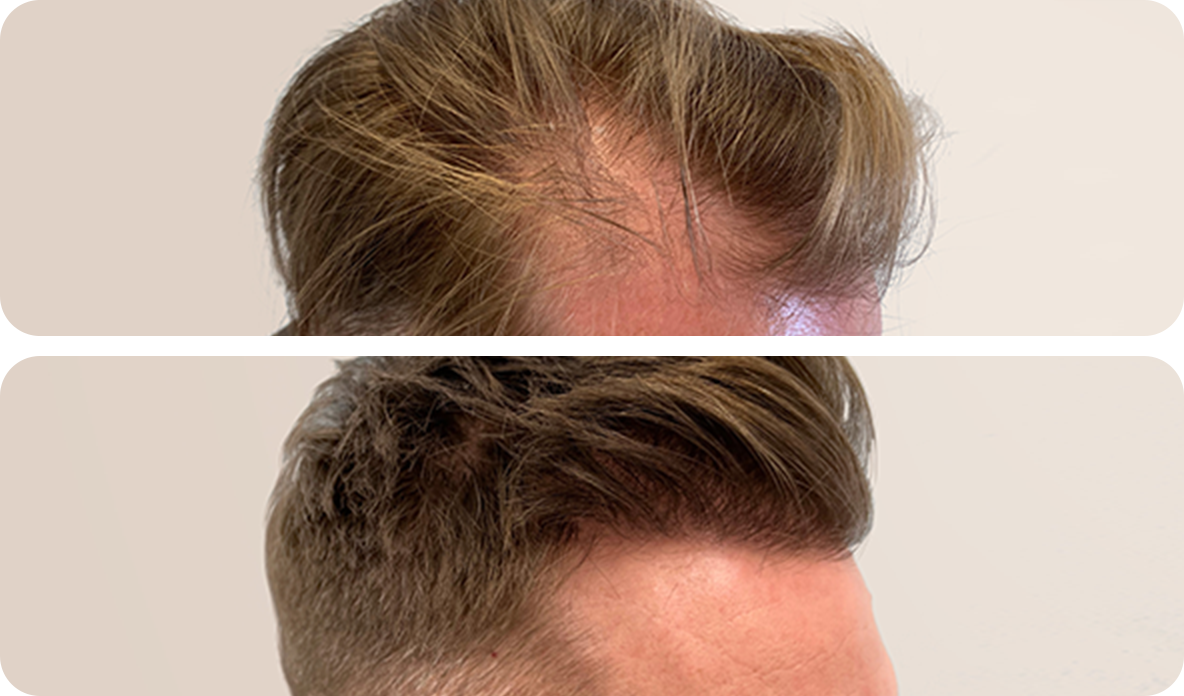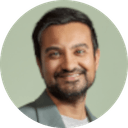
What is FUT surgery?
Follicular unit transplantation (FUT) is also known as strip harvesting or follicular unit strip surgery (FUSS). After administering local anaesthesia, surgeons remove a thin strip of skin containing healthy hair follicles from the back of the head – the size of the strip depends on the number of grafts required. The skin edges are then gently closed together with stitches resulting in a subtle linear scar. The strip is then carefully separated into individual healthy grafts under magnification and those grafts are carefully implanted into balding areas via tiny incisions in the scalp, delivering natural-looking results that are indistinguishable from your existing hair.
The recovery time associated with FUT is longer than follicular unit extraction (FUE) surgery, however, the procedure allows for more grafts to be extracted from a limited donor area.
Why choose FUT surgery?
FUT allows surgeons to take a larger number of grafts from a smaller donor area. Although this technique leaves a fine linear scar – which can easily be covered with slightly longer hair – the implantation method is exactly the same as in follicular unit extraction (FUE) surgery, so it provides the same natural-looking results. If you don’t want to shave your head at the donor site, have previously had FUT surgery, or have tight curls or Afro-textured hair, FUT could be ideal for you.
The FUT surgery process
Initial consultation with a hair transplant specialist
The first step in your hair transplant journey will be a consultation with one of our in-house hair transplant specialists. During this consultation your dedicated specialist will answer any questions, talk you through our available procedures, and assess your suitability for surgery. They’ll then pass on your medical details and discuss your individual requirements with your surgeon.
Consultation with your hair transplant surgeon
The next step in the process is an in-person or video consultation with your dedicated surgeon. The surgeon will establish the cause of your hair loss, and perform a thorough examination and an in-depth hair analysis – in video consultations they’ll do this using photos and videos that you provide. Your surgeon will discuss your best treatment options with you, and design a bespoke surgical plan tailored to your requirements to achieve natural, long-lasting results.
Within 24 hours of your consultation, your dedicated hair loss specialist will liaise with you regarding the next steps, providing a detailed quote and available surgery appointments. Once you decide that you’re ready to proceed we’ll find a surgery date that works for you.
Surgery
Your surgery will take place at one of our state-of-the-art private clinic in Leeds.
Surgery prep & anaesthesia
The surgeon will brief the team and team members will introduce themselves so that you’re surrounded by familiar faces throughout your experience. A member of the surgical team will carefully trim or shave the areas required for the procedure. The surgeon will carefully administer a local anaesthetic to the donor area to ensure you feel no pain or discomfort during your surgery – this will take effect within a few minutes.
Hair follicle extraction
Once the donor area is numb, the surgeon will use a scalpel to remove a thin strip of skin from the donor site before carefully stitching it up, resulting in a subtle linear scar.
Hair follicle implantation
After marking the areas where hair will be implanted, your surgeon will administer a local anaesthetic and begin creating tiny incisions to facilitate graft placement at a natural angle. Grafts harvested from the strip of skin are then carefully implanted into these incisions by the surgeon and their team to ensure a natural final result. The surgeon will then carefully inspect the recipient area under magnification to ensure that the grafts have been implanted successfully.
Aftercare
Our unparalleled aftercare will ensure you achieve the best possible results. We’ll provide you with aftercare materials and medication, and your surgeon will walk you through your aftercare instructions so that you feel confident and comfortable looking after your scalp in the days and weeks to come.
Our dedicated hair transplant specialists will be on hand to answer any questions and offer advice throughout your recovery via a 24/7 aftercare hotline. At Manual we operate an open follow-up policy which means that we’re on hand to see you at any stage of your journey if you’d like to discuss your progress.
Recovery time
Follicular Unit Transplantation (FUT) techniques have advanced significantly over the past few years and we find that most of our patients wake up the following day without any pain or discomfort. You should be able to return to your normal routine 10 to 14 days after your FUT transplant depending on your lifestyle. You may resume gentle exercise from week 1 and more strenuous exercise from week 2 following surgery.
You should follow the instructions detailed in our aftercare package and take extra care for 1 to 2 weeks following your procedure to ensure that the grafts are kept in a safe and stable environment.
General FUT FAQs
- Is FUT right for me?
If you require a larger number of grafts, don’t want to shave your head at the donor site or have tight curls or Afro-textured hair, FUT could be ideal for you. It’s also recommended for those who have previously had FUT surgery – if this is your second procedure your previous scar will be removed so that you’ll still just be left with one linear scar.
- When will I see results from FUT surgery?
You may see an immediate improvement in coverage, however, most of the transplanted hairs will shed in the first 6 to 12 weeks. After this you’ll see new, sustained hair growth and the final results will be visible from 12 to 18 months following surgery.
- Is FUT a painful procedure?
FUT procedures are performed under local anaesthetic – once the initial injections have been administered you should feel no pain or discomfort during the procedure. Our patients often find the procedure relaxing and many fall asleep. We can also administer a mild sedative to relax you if you’re anxious about having surgery. You can expect some minor swelling, itchiness and mild discomfort after the procedure but this will subside and is easily managed with the medication provided in your aftercare package.
- What type of hair loss can FUT surgery treat?
FUT can successfully treat the most common causes of hair loss:
- Male and female pattern hair loss (androgenetic alopecia)
- Traction alopecia
- Scars
- Naturally high hairlines
- Eyebrow or beard hair loss
It’s ideal for patients with tight curls or Afro-textured hair as well as those with longer hair styles.
- Are FUT surgery results permanent?
The majority of the transplanted hairs should remain permanently, although you can expect a small amount of shedding as you age. We recommend supplementing your treatment with hair-loss medications Finasteride and Minoxidil to encourage continued hair growth and help you maintain hair in other areas that may be vulnerable to thinning.
- How long does FUT surgery take?
On average an FUT hair transplant usually takes between 4 to 8 hours depending on the graft requirement.
- How long is the recovery period?
You should be able to return to your normal routine 10 to 14 days after your FUT surgery depending on your lifestyle. You may resume gentle exercise from week 1 and more strenuous exercise from week 2 following surgery.
- Who will perform the FUT procedure?
All of our hair transplant procedures are performed by our skilled surgeons. Although highly skilled members of the team, our technicians and surgical assistants will never harvest any follicles or create the incisions into which the grafts are transplanted. They will assist the surgeon in graft placement once the surgeon has created the incisions, which is a safe, recognised role for surgical assistants in the UK.
- Are there any side effects to the FUT procedure?
There may be some minor pain, swelling, and itchiness for a few days post-surgery but this will subside and is easily managed with the medication provided in your aftercare package.
- Will I need to shave my head?
There’s no need to shave the donor area with FUT surgery so it’s ideal for those with longer hair. If there are existing hairs in the recipient area we sometimes trim these to facilitate graft placement, however, this is usually not necessary. You won’t need to shave your head prior to surgery, our team will trim your hair on the day if required. We recommend waiting for 2 weeks before getting your first haircut following surgery.
Comparing hair transplant methods
Here’s a simple breakdown of the main differences between our available hair restoration surgeries.




